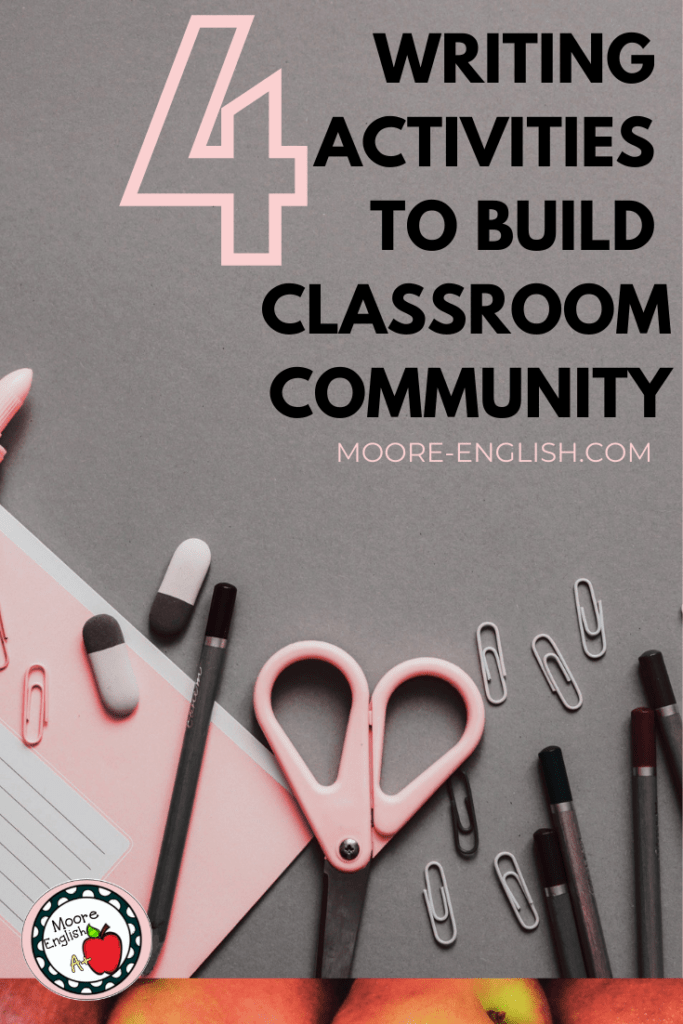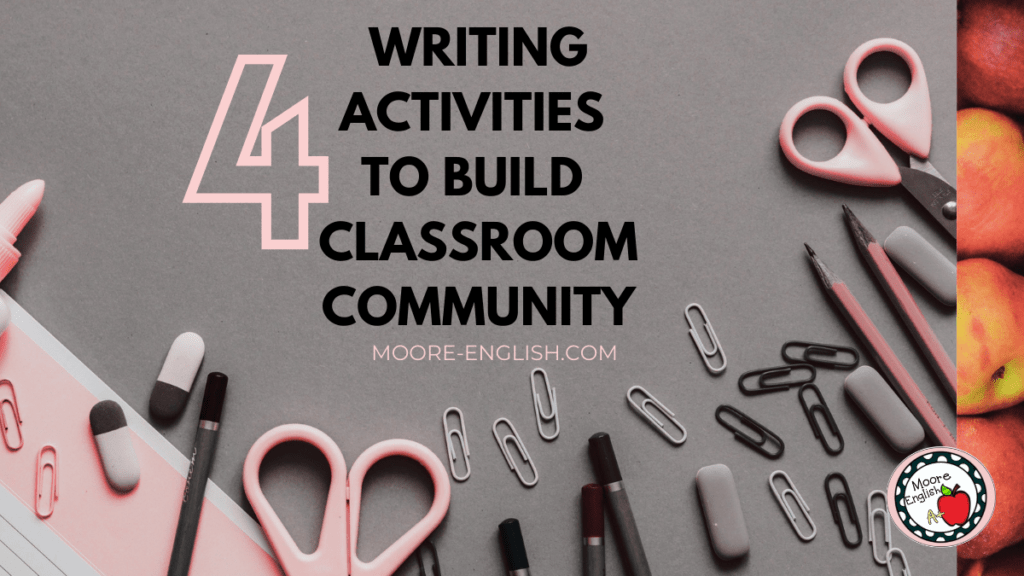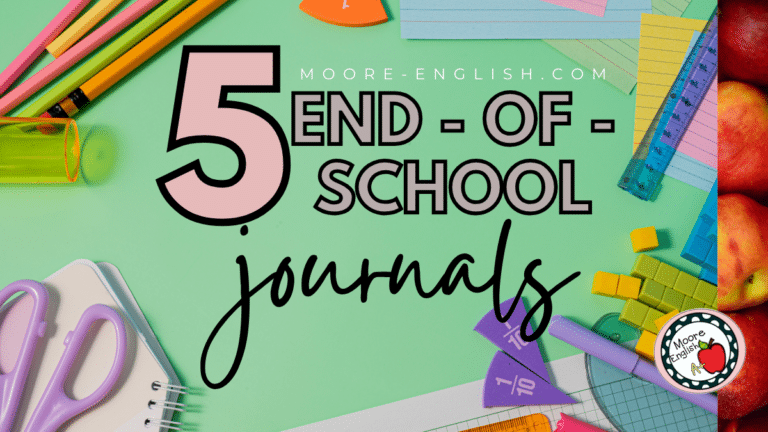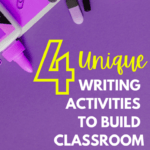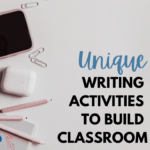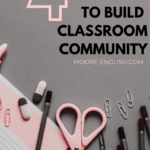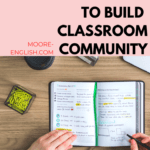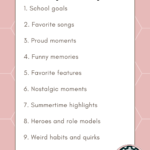The beginning of the school year is all about building habits and relationships. In the English language arts classroom, it’s important to build writing as a habit.
Furthermore, reading and responding to students writing is a great way to get to know students and build relationships.
Additionally, once students share their work with one another, they can begin to establish classroom community and culture.
This post this post may contain affiliate links. Please read the Terms of Use.
Starting With Small Successes
At the beginning of the school year, it’s important to establish writing habits the same way we establish classroom procedures and seating charts.
However, students sometimes come to school with “writing baggage.” They’re not ready for long, structured writing, or they have had previous negative writing experiences. In an effort to get students back in the routine of writing and to help them associate writing activities with a positive experience, I like to start small. In other words, I want students to start the year with success so we can build our confidence as writers.
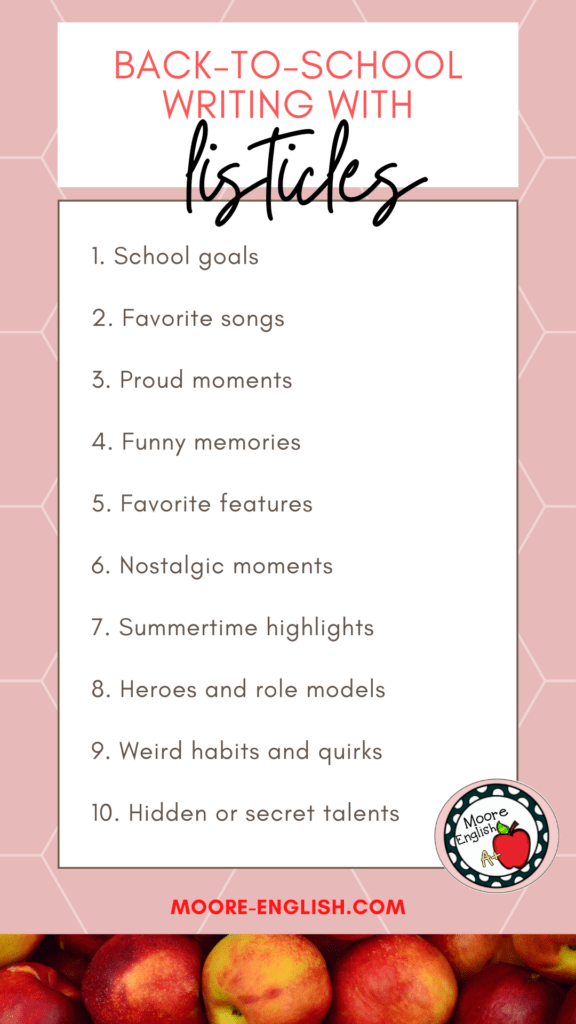
A listicle is a short, easy piece of writing for students to begin the year. Sites like Buzzfeed have perfected the art of the listicale, so students are familiar with this kind of text. Furthermore, this kind of structure is easy for students to start, and it’s a great place to begin pointing out that structure creates meaning.
At the beginning of the year, there are countless topics students can choose for their listicles. My favorite option is to have students make a bucket list for the year. I teach a lot of sophomores, so my students are often focused on their driving tests and finding first jobs. These kinds of details help students introduce themselves while still giving them control over what they share.
A benefit of the bucket list writing activity is that students can then build classroom community by sharing a few of their bucket list items with their classmates. Depending on what your students share, this can even become a back-to-school bulletin board.
Writing Activities for Communication
Building classroom community depends on successful and meaningful communication. Since writing is a social activity, it should be part of communication and community building. We often think of communication as speaking and body language, but writing is often one of our primary modes of communication.
At the start of the year, helping students write successful emails helps them better communicate with their teachers and with one another. An email is a low-stakes way to help students practice structured writing, modulating their tone, and practicing building a writing habit. I ask students to practice writing an email to me for a few reasons:
- Firstly, this opens the doorway for students to email me in the future. Something about having that door open helps students use this resource.
- Secondly, this helps me assess students’ technological know-how. While our students are often fluent in entertainment apps, they are not always proficient in professional communication.
- Thirdly, this helps me assess students’ ability to use structure and tone to communicate successfully.
- Most importantly, exchanging some friendly emails helps establish a rapport.
Similarly, letter writing is a good way to help students build community while building a writing habit. With letter writing, students can practice structured writing and provide me a writing sample, but they can also write to one another. They can write to previous teachers or to friends in other classes. Plus, my students love addressing envelopes. The novelty of mail is also fun for my students!
Creative Writing Activities
For a long time, I taught British literature. In the unit on Medieval Romance, students would create their own personal Coat of Arms and complete a short writing assignment to accompany it.
While I haven’t taught British literature in a long time, I have adapted this writing activity. Students get to decorate a personal Coat of Arms, which gives everyone a chance to express themselves and introduce themselves to their classmates. Then, students write about their Coat of Arms to explain their choices.
The writing for this activity is the most structured option I have for back-to-school. This gives me a good writing sample from students, helps them build that writing habit, and provides an opportunity for students to share their work.
What other writing activities should we incorporate during back to school?

